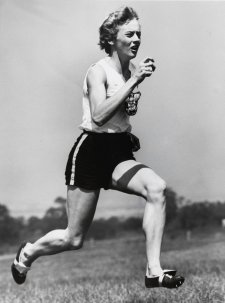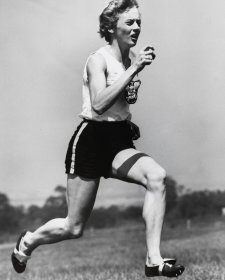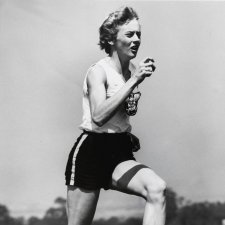- About us
- Support the Gallery
- Venue hire
- Publications
- Research library
- Organisation chart
- Employment
- Contact us
- Make a booking
- Onsite programs
- Online programs
- School visit information
- Learning resources
- Little Darlings
- Professional learning
The Delltones formed in Sydney in 1958, when Bronte Surf Club lifesavers Ian ‘Peewee’ Wilson (b. 1940) and Noel Wilderberg – the band’s original frontman – began singing together at surf club functions. In late 1958 the pair teamed up with Brian Perkins (birth date undisclosed) and Warren Lucas (1939–2019) and started busking and performing doo wop harmonies in talent quests. It’s said that they got their first gig as a result of a Kings Cross nightclub owner hearing them singing on the street outside his premises. In 1959 they supported various touring musicians managed by the American promoter Lee Gordon, and began providing back-up vocals for Australian acts – notably Johnny O’Keefe, who became their mentor and with whom they performed on ABC TV’s Six O’clock Rock. They also appeared on Bandstand and recorded back-up vocals for singers such as Slim Dusty. Col Loughnan (b. 1942) joined the band as lead vocalist following Wilderberg’s death in a car accident in 1962. During the 1960s, The Delltones released a cover of the Beach Boys’ ‘Surfer Girl’ as well as a number of other surf singles; and performed for troops in Vietnam. Loughnan and Lucas left the band in the late 60s and the revamped line-up went to London, where they were signed by EMI. Returning to Australia, their sound became increasingly out-of-step in an ‘age of rock festivals and bands of stoned, hirsute musicians who gazed at their sandalled feet’, and The Delltones disbanded in 1973. In 1978, Perkins and Wilson got the band back together. Perkins left in 1981, after which the reconstituted Delltones – now an anomaly in the era of gritty, sweaty Australian pub bands – were rebranded as retro, rock ‘n roll revivalists. They released Bop Til Ya Drop in 1984 and – in keeping with Wilson’s mantra ‘Keep Raging and Stop the Ageing’ – proceeded to establish a constant schedule of club, variety and festival performances, including appearances at Moomba, the Adelaide Festival and the AFI Awards. The recipients of four Mo Awards, The Delltones released a total of 20 albums between 1962 and 2014; and 30 singles between 1959 and 1993. Though never achieving the chart success or cult status of some of their compatriots and contemporaries, The Delltones, writes rock historian Glenn A Baker, ‘have been cited as one of the few real constants in a frantically changing world. Fifty years on, audiences still scream, audiences still shout, audiences still go away singing the songs, dancing the steps, chanting the goofy chants and looking forward to coming back for another dose as soon as they can.’
Collection: National Portrait Gallery
Purchased 2019
© Michael McQuillan's Classic Photographs



On one level The Companion talks about the most famous and frontline Australians, but on another it tells us about ourselves.



Former NPG Deputy Director, Simon Elliott talks with Ern McQuillan about his life and career as a sports photographer.



Visit us, learn with us, support us or work with us! Here’s a range of information about planning your visit, our history and more!